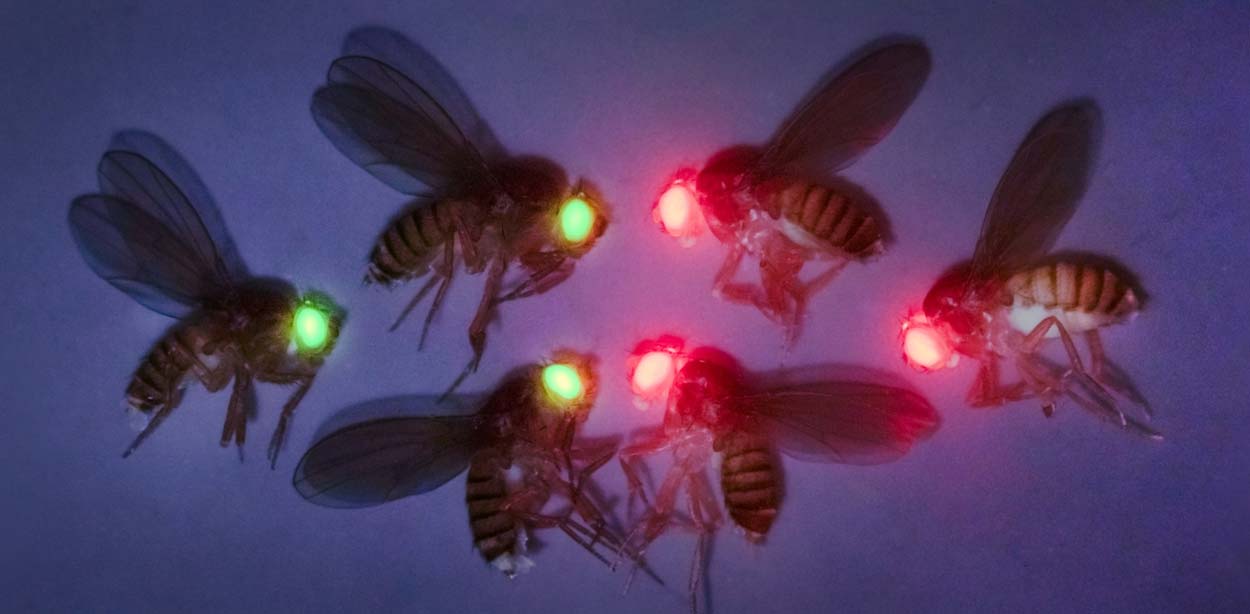New Technology Boosts Gene-Drive Safety, Flexibility
‘Transcomplementing’ gene drive offers new approach for lab experiments and potential field trials
January 24, 2020
By Mario Aguilera

The new transcomplementing split gene-drive was developed in flies, separating the Cas9 elements (red flies) with the guide RNA (green flies).
Gene-drive systems based on CRISPR-Cas9 technology have opened a vast world of opportunities for scientists to develop genetically based solutions to urgent global health, disease and sustainability issues.
In the case of malaria, for example, scientists are creating gene drives that spread through mosquito populations and halt the transmission of the deadly disease. But along with gene drive’s promise has come concern about the technology’s potential to quickly propagate and spread broadly unchecked.
Researchers at the University of California San Diego have developed a new method to increase safety controls for gene-drive systems.
Gene drives function through two main components, the Cas9 protein that binds to and cuts DNA, and the guide RNA, or “gRNA,” that directs the edits. The new technology splits the Cas9 and gRNA components into separate functional areas during gene-drive development. Since each component is needed to implement a functioning gene drive, research safety increases and risk is reduced. When the full gene drive is ready to be tested and implemented, the components are merged back together in subsequent generations.
The new “transcomplementing” split-gene-drive is described in Nature Communications.
“This two-component nature of the system aids scientists during the optimization phase of laboratory research as well as increases safety by limiting the potential escape of engineered animals to experimentation windows,” said Valentino Gantz, an assistant research scientist, senior author of the new study and a collaborator with the Tata Institute for Genetics and Society.
The new method was developed in flies but eventually could be adapted to mosquitoes. The transcomplementing gene-drive, the researchers say, also has potential advantages in field deployments seeking to alter wild populations. This novel gene drive could be more effective at modifying wild mosquito populations by reaching a higher number of individuals with engineered anti-pathogen genes.
“We really hope that a lot of aspects that we have covered in this study can be helpful for the design of future gene drives,” said Gantz.
Study coauthors include Víctor López Del Amo, Alena Bishop, Héctor Sánchez C., Jared Bennett, Xuechun Feng, John Marshall, Ethan Bier and Valentino Gantz.
